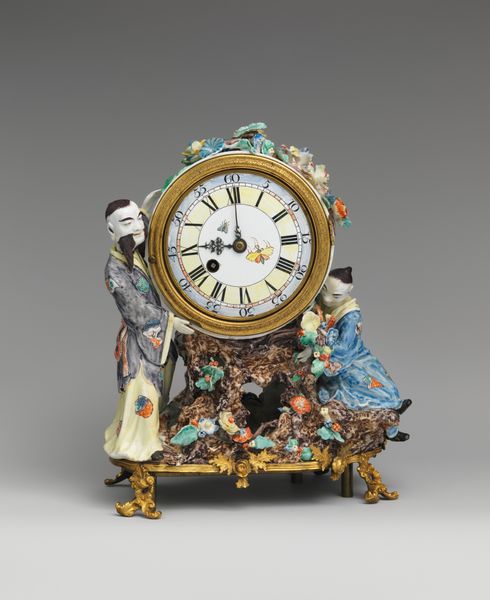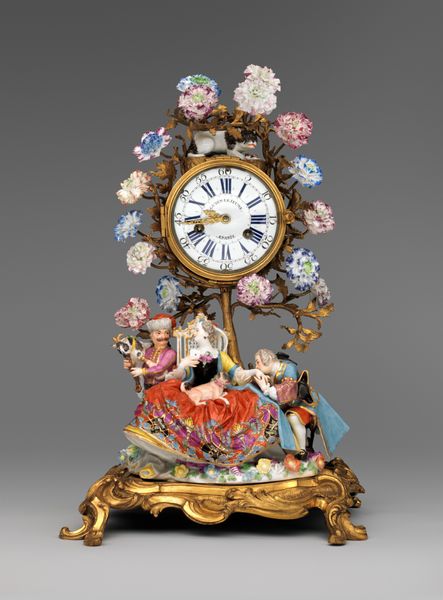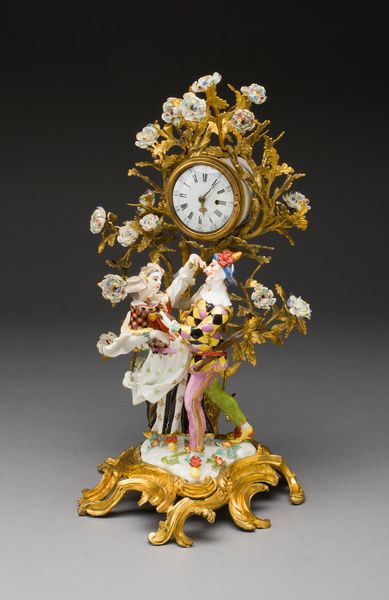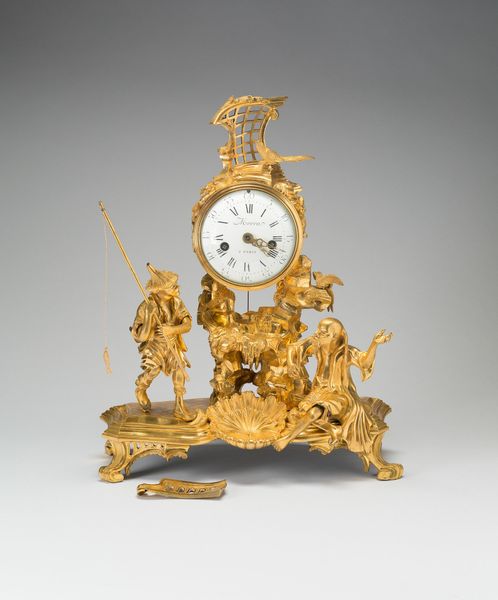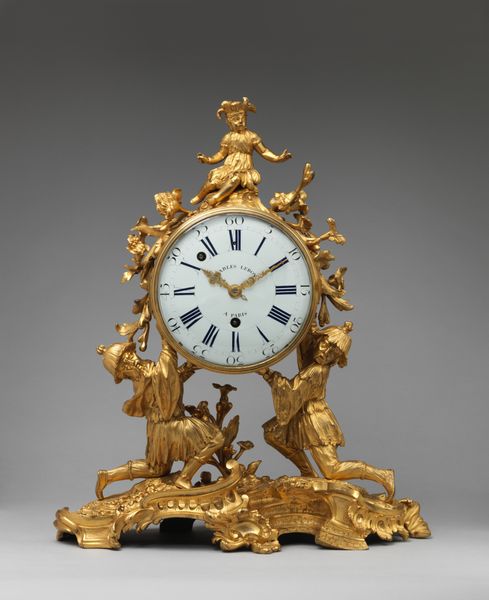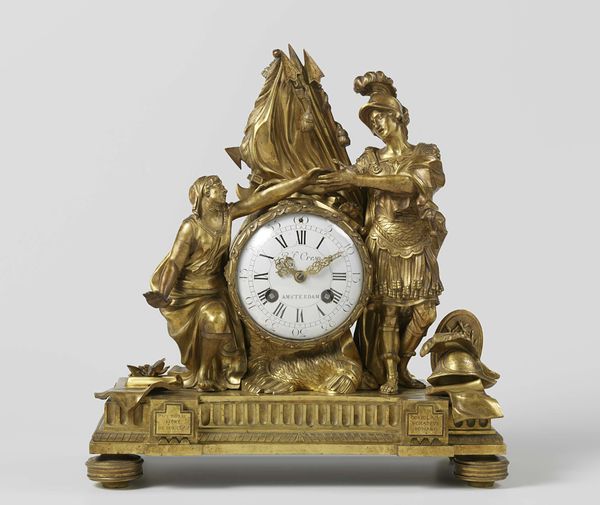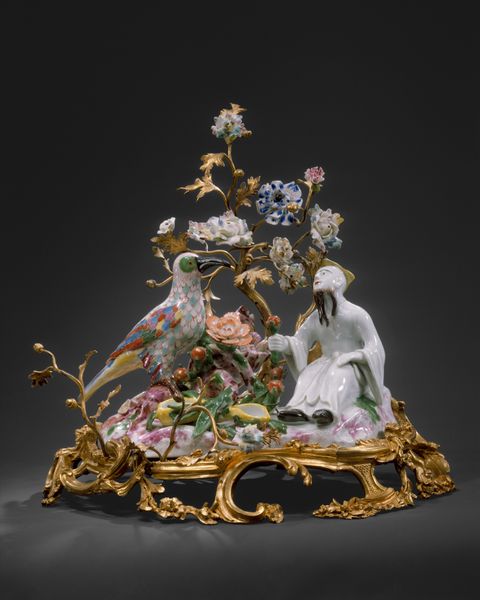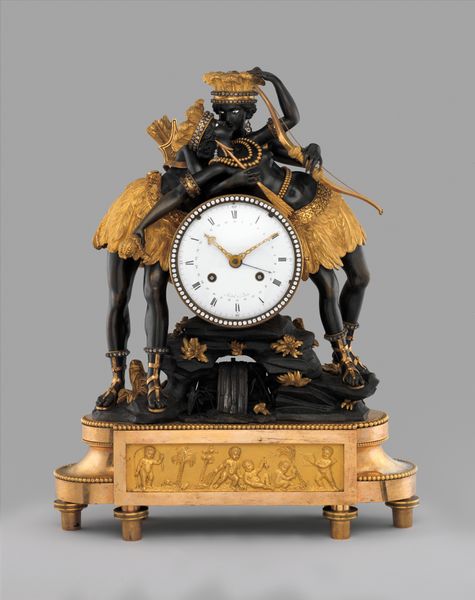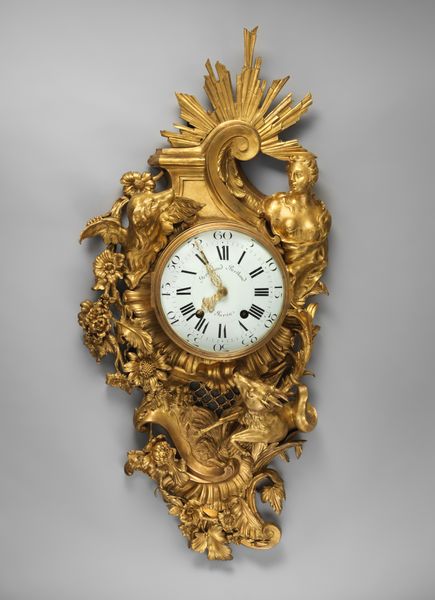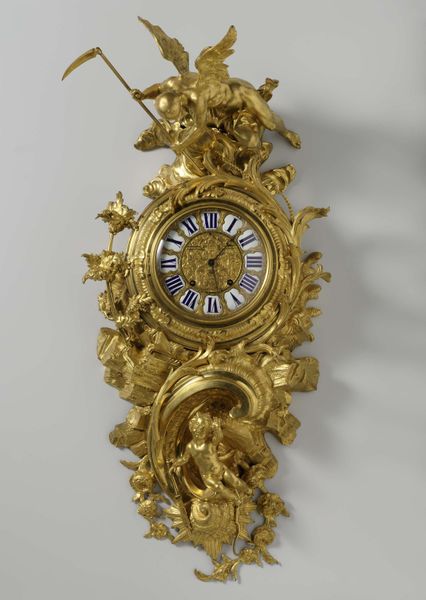
ceramic, guilding, sculpture
#
portrait
#
ornate
#
ceramic
#
guilding
#
figuration
#
traditional architecture
#
sculpture
#
decorative-art
#
rococo
Dimensions: height 43.9 cm, width 30.7 cm, depth 26.1 cm, height 16.5 cm
Copyright: Rijks Museum: Open Domain
This pendule clock, crafted by an anonymous artist, is a fascinating dance between time and symbolism. The clock is embellished with an array of flowers and depicts a couple. These elements were more than mere decoration; flowers, since antiquity, are emblems of ephemeral beauty, love, and renewal. The presence of a couple symbolizes love, harmony, and the continuity of life. Similar motifs flourished in Renaissance paintings, often laden with allegorical significance. Botticelli’s figures, draped in floral gowns, echo this sentiment, embodying Primavera—the season of rebirth and vitality. This motif has been adapted in different artistic contexts, evolving from sacred to secular, yet retaining its core associations with love, life, and beauty. The collective memory, deeply ingrained within the human psyche, responds to this symbolic language. We, as viewers, are not passive; we are active participants, subconsciously connecting with the emotional weight of these recurring symbols. They are the Ariadne's thread that guides us through the labyrinth of cultural memory. Each iteration, while distinct, is a continuation, an evolution, a cyclical return.
Comments
rijksmuseum about 2 years ago
⋮
A great deal of Meissen ware was exported to Paris, where merchants in luxury goods devised all kinds of new objects in which to incorporate the expensive porcelain. This clock is set in a gilt-bronze case to which a Meissen porcelain figure group has been added. The two figures are Columbine and Pantalone, characters from the commedia dell’arte, the Italian theatre tradition.
Join the conversation
Join millions of artists and users on Artera today and experience the ultimate creative platform.
